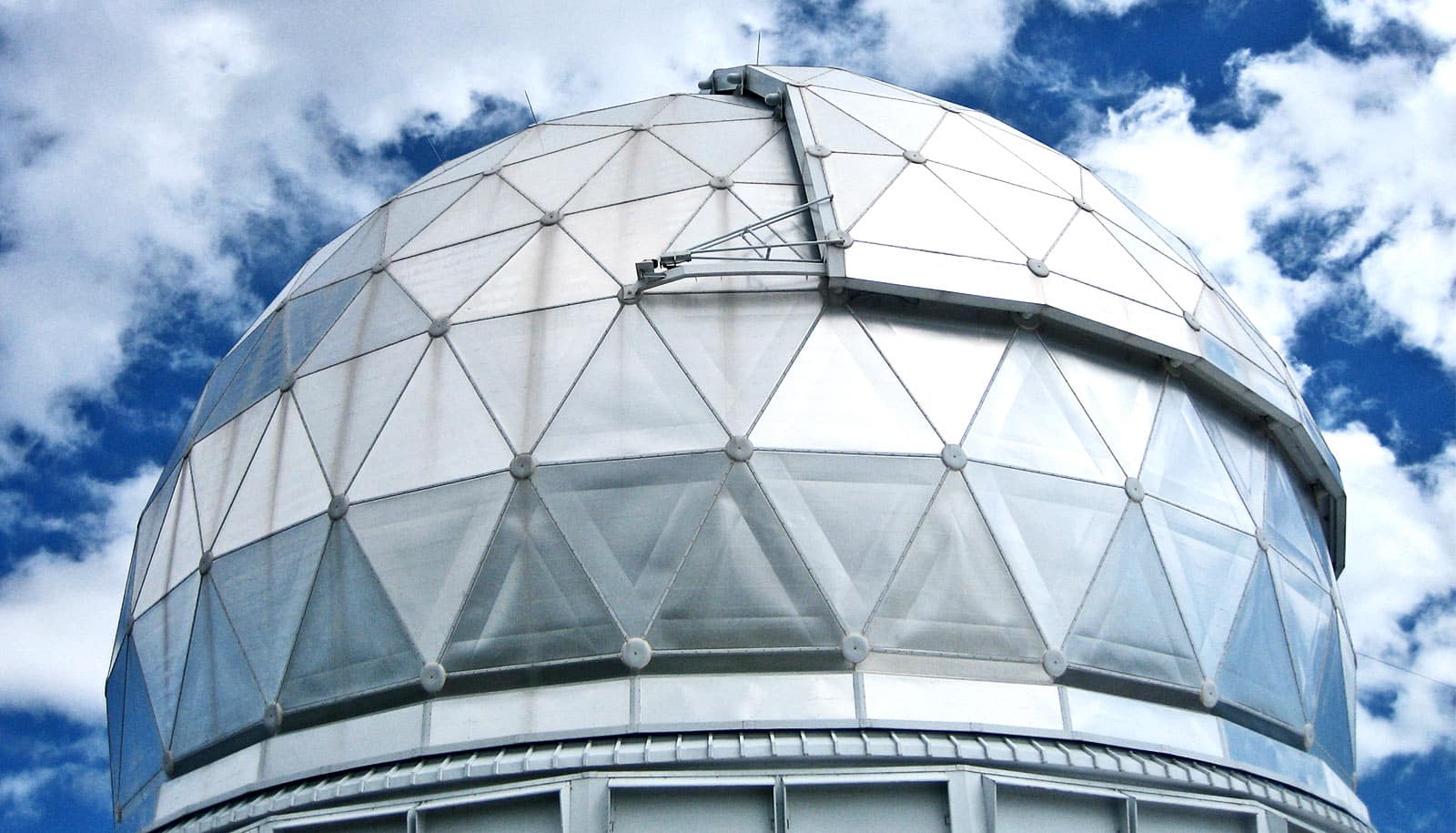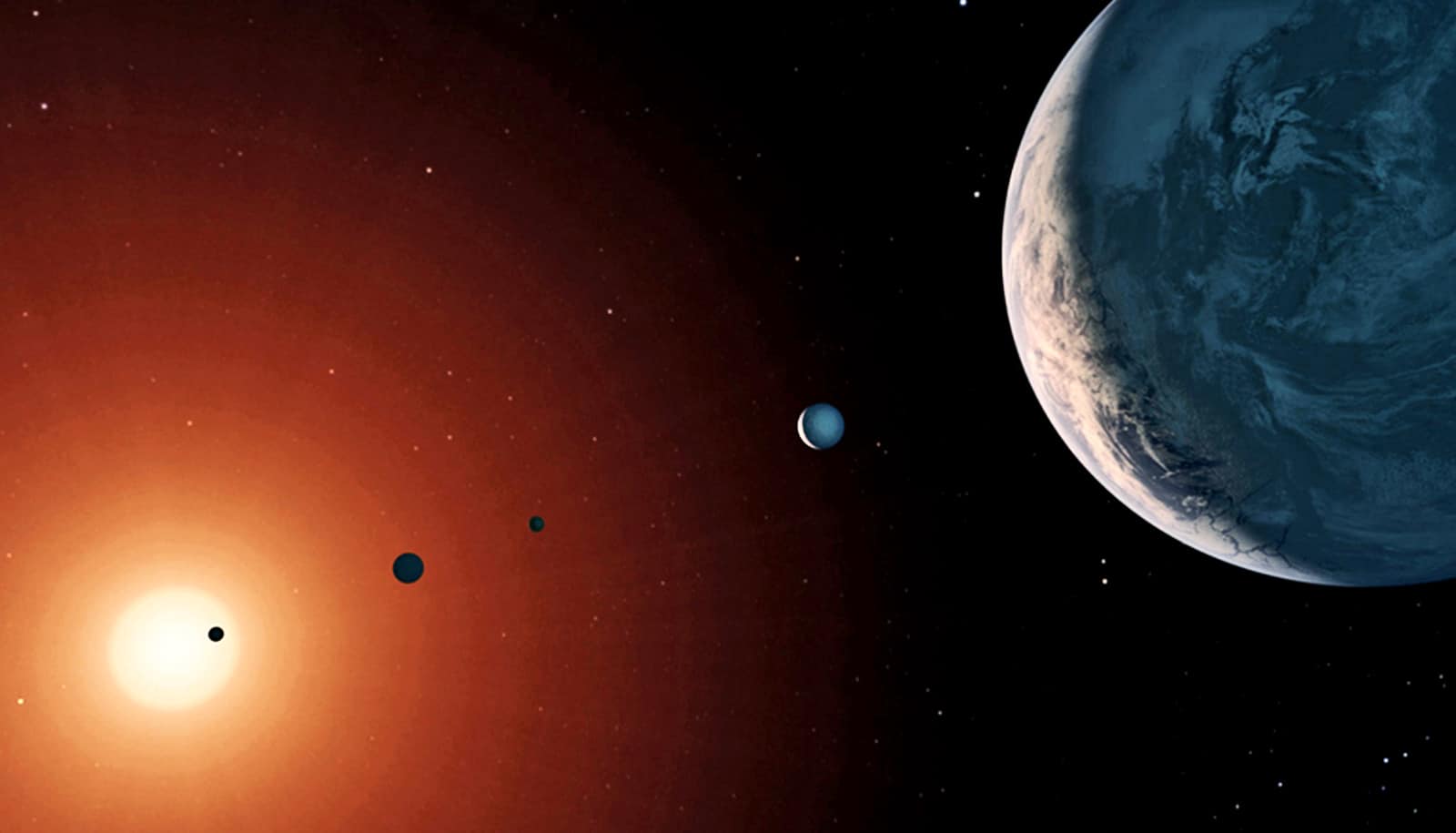Researchers using the Habitable-zone Planet Finder have validated that a signal the Kepler spacecraft originally detected is a sub-Neptune sized exoplanet.
The Habitable-zone Planet Finder (HPF) is an astronomical spectrograph recently installed on the 10m Hobby-Eberly Telescope at McDonald Observatory in Texas.
It provides the highest precision measurements to date of infrared signals from nearby low-mass stars. Astronomers used it to validate the candidate planet by excluding all possibilities of contaminating signals to very high level of probability
The planet, called G 9-40b, is about twice the size of the Earth, but likely closer in size to Neptune. It orbits its low mass host star, an M dwarf star, only 100 light years from Earth.
Kepler detected the planet by observing a dip in the host star’s light as the planet crossed in front of—or transited—the star during its orbit, a trip completed every six Earth days. Researchers then validated the signal using precision spectroscopic observations from the HPF, ruling out the possibility of a close stellar or substellar binary companion.
Observations from other telescopes, including the 3.5m telescope at Apache Point Observatory and the 3m Shane Telescope at Lick Observatory, helped to confirm the identification.
Exoplanet with 12 Earth masses
“G 9-40b is amongst the top 20 closest transiting planets known, which makes this discovery really exciting,” says Guðmundur Stefánsson, a former doctoral student at Penn State who is currently a postdoctoral fellow at Princeton University and lead author of the paper in the Astronomical Journal.
“Further, due to its large transit depth, G 9-40b is an excellent candidate exoplanet to study its atmospheric composition with future space telescopes.”
“The spectroscopic observations from HPF allowed us to place an upper bound of 12 Earth masses on the mass of the planet,” says coauthor Caleb Cañas, a graduate student.
“This demonstrates that a planet is causing the dips in light from the host star, rather than another astrophysical object such as a background star. We hope to obtain more observations with HPF to precisely measure its mass, which will allow us to constrain its bulk composition and differentiate between a predominantly rocky or gas-rich composition.”
HPF arrived at the 10m Hobby-Eberly Telescope at McDonald Observatory in late 2017 and started full science operations in late 2018. Researchers designed the instrument to detect and characterize planets in the habitable-zone—the region around the star where a planet could sustain liquid water on its surface—around nearby low-mass stars.
A unique feature of HPF is its precise spectral calibration with a laser frequency comb collaborators at the National Institute of Standards and Technology and the University of Colorado Boulder built.
“Using HPF, we are currently surveying the nearest low-mass stars—also called M-dwarfs, which are the most common stars in the galaxy—with the goal of discovering exoplanets in our stellar neighborhood,” says Suvrath Mahadevan, a professor of astronomy and astrophysics and principal investigator of the HPF spectrograph.
Precise measurements
In addition to the data obtained with HPF, the scientists obtained another observation of the transiting planet using the 3.5m telescope at Apache Point Observatory in New Mexico using a photometric technique and instrumentation developed as part of Stefánsson’s doctoral thesis.
These transit observations helped further resolve the “transit shape”—the curve that represents how much of the host planet’s light is blocked—resulting in more precise planetary parameters. In addition, high-contrast imaging observations using the 3m Shane Telescope at Lick Observatory showed that the host star was the true source of the transits.
“It is exciting to see this first result of the HPF survey coming out. HPF was built from the ground up to enable precision measurements to discover and confirm planets,” says Larry Ramsey, emeritus professor of astronomy and astrophysics.
The Hobby-Eberly Telescope (HET) is a joint project of the University of Texas at Austin, Penn State, Ludwig-Maximilians-Universität München, and Georg-August Universität Gottingen. The HET is named in honor of its principal benefactors, William P. Hobby and Robert E. Eberly.
The National Science Foundation, Penn State, the Heising-Simons Foundation, the NASA Earth and Space Science Fellowship program, the Center for Exoplanets and Habitable Worlds at Penn State, and the Research Corporation funded the work.
Source: Penn State



